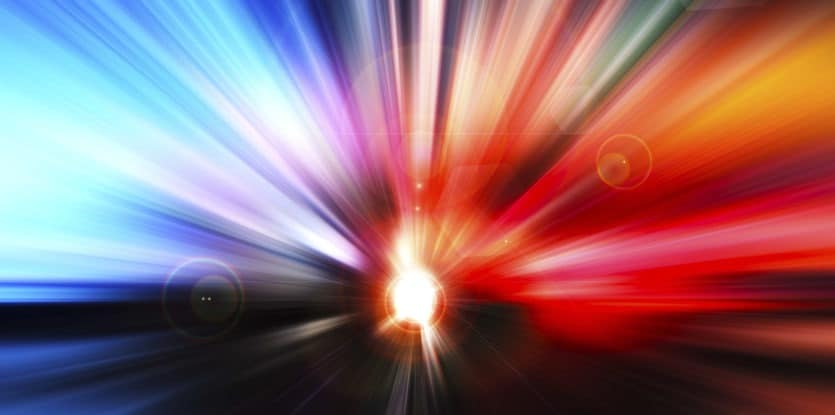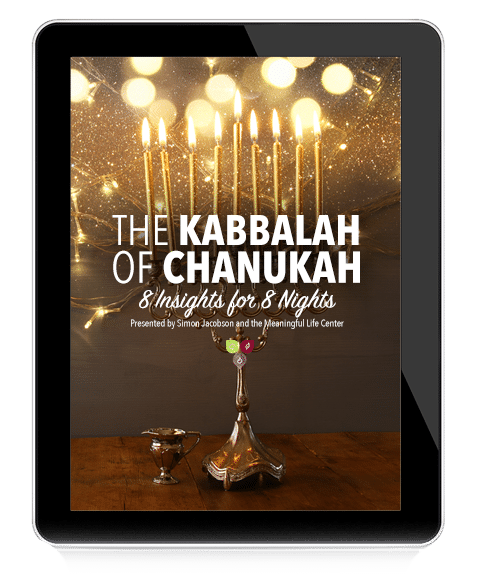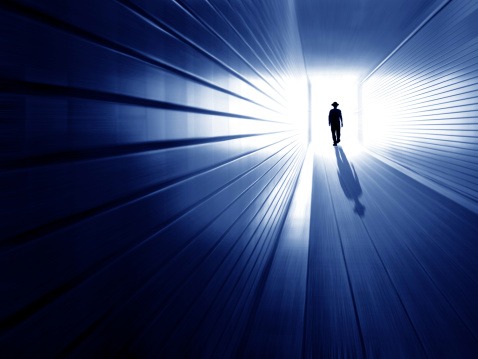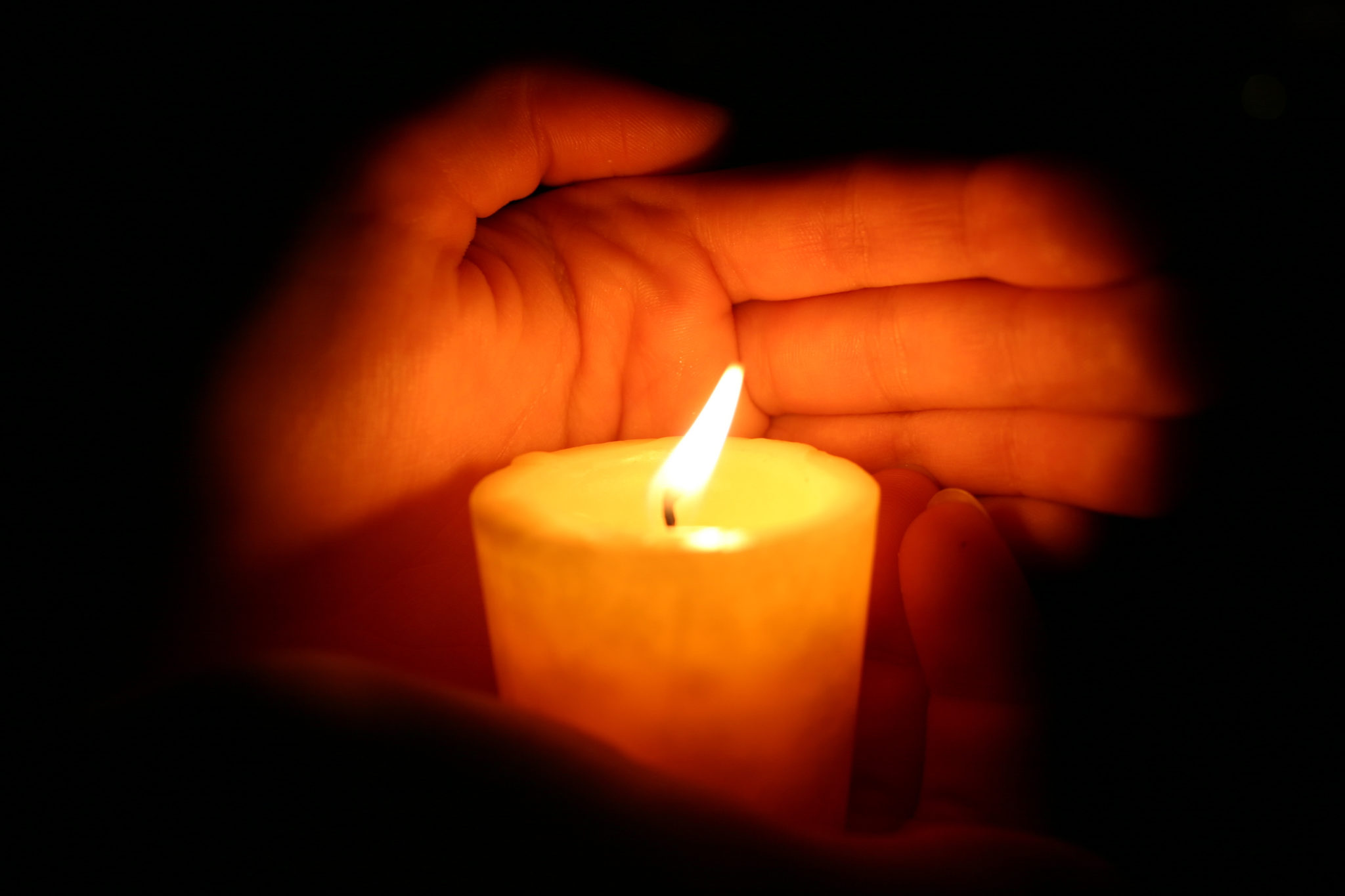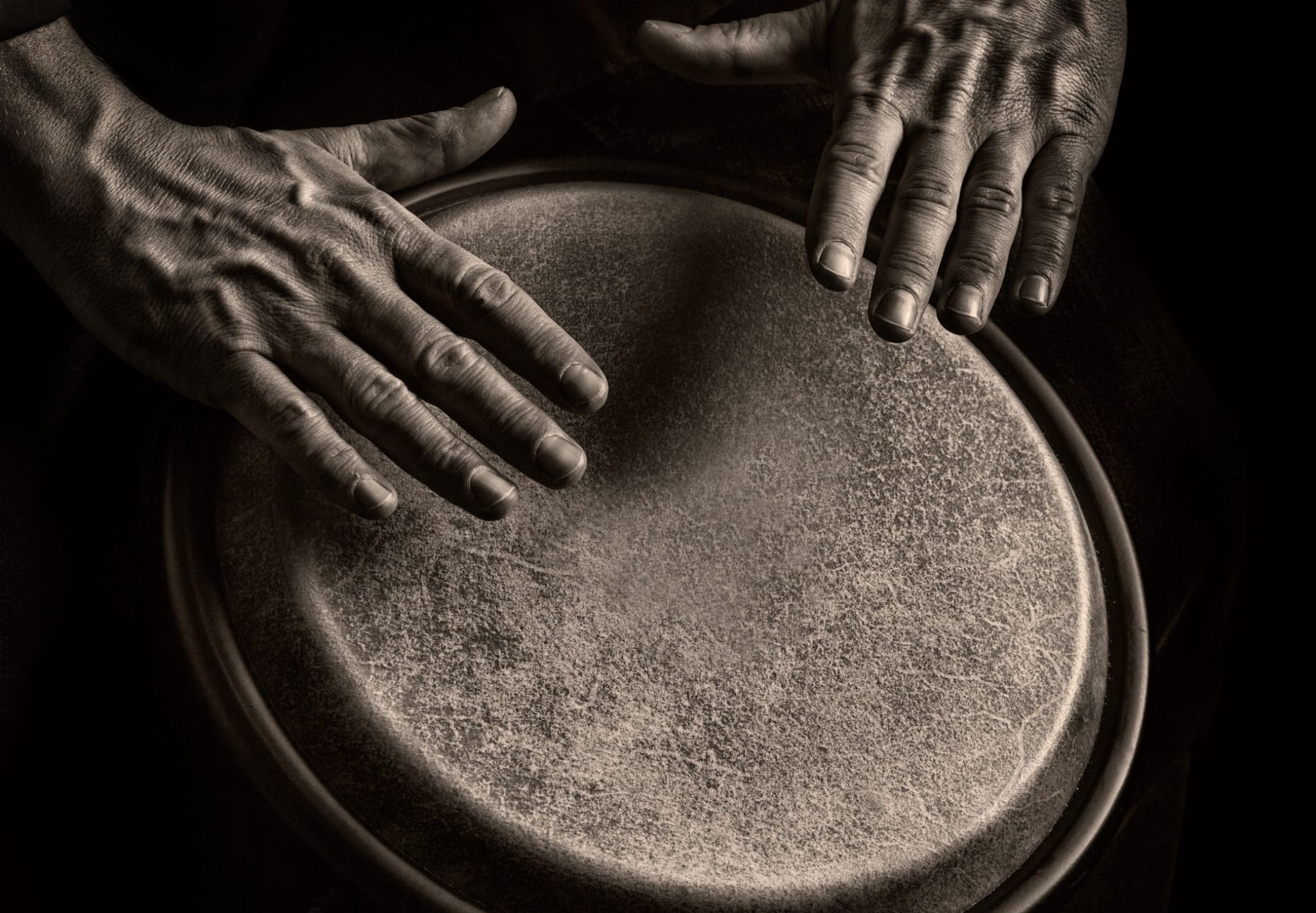We need to listen to the story that the Chanukah lichtelech (flames) tell us
– The Rebbe Yosef Yitzchak SchneersohnA little light dispels a lot of darkness
– The Sages
Light is the core of physics. Light – energy – defines the very parameters of existence.
In modern physics it is now commonly accepted that light, or in more general terms, electromagnetic radiation (microwaves, radio waves, light rays, x rays, gamma rays) has a dual nature: it behaves both like a wave and a particle. The same has been proven regarding the behavior of subatomic matter: it appears as both a particle and a wave.
And this is no small matter: A particle and a wave are opposites. A particle is an entity confined to a very small volume, while a wave is spread out over a large region of space.[1] How light can be both a wave (a field of energy) and a particle (a discrete entity) remains one of the biggest mysteries in science, yet it has been proven time and again despite its inherent paradox.
A fascinating fact: Long before science discovered the importance of light, the Kabbalah uses light (ohr) as the ultimate metaphor to describe G-d’s ‘expression,’ i.e. the Divine transmission – the energy that brings existence into being and makes up all of existence. Light reflects, expresses and transmits the Divine energy. Existence is ‘light’ emitted from the Divine.
And like physics would later discover, Jewish mysticism (as explained at length in Chassidic thought, see for example, the discourse Vayeilech 5666 from the Rebbe Sholom DovBer) describes the dual nature of light. Light combines both substance and no substance: it has no substance of its own; it always reflects its (luminary) source. Yet, precisely because of its transparent bittul (selflessness), light purely reflects and channels the deepest ‘substance’ of the source, with no ‘personality’ of its own to get in the way.
Light, with all its paradoxical qualities, is our best metaphor for understanding the process of creation. By contemplating the paradox of light — that it is clearly real and yet appears to have no substance or shape — we can approach an even greater paradox: the unity of our physical universe with the ‘universe’ of G-d. The mysterious qualities of light illustrate the main truth of our physical universe: that an existence must not be defined only in terms of its own being, but as a means to illuminate a higher truth. Light becomes both a pure expression of the Divine and the metaphor that, through our reason and other faculties, allows us to experience the ways of G-d.
Light straddles the defining line that runs between the physical and the spiritual. Light – sans weight, sans mass, sans just about any of matter’s properties – is the most ethereal of physical “things.” Perceptibly real, yet free of the qualities we ascribe to the objects of our perceptible universe, light serves as a bridge of allegory between a mind grounded in a material environment and the metaphysical abstractions it contemplates.
Light, in other words has a dual quality of both particle and wave. It is a defined entity of its own with its own distinct ‘space,’ yet its ‘particle’ identity’ is wave-like, spread out like an energy field, carrying Divine energy into existence, like ocean waves washing up on the shore.
Chanukah is the Festival of Light. All the events of Chanukah are remembered and celebrated with light. We kindle the Chanukah flames to commemorate the victory of the ‘few over the many,’ the ‘weak over the mighty’ and the miracle of discovering the small crucible of olive oil which then burned for eight days. The Temple was subsequently rededicated (hence the name Chanukah which means ‘dedication’). All this is commemorated with light.
Chanukah – like light – is paradoxical:
The essential miracle – and message – of Chanukah is the dominance of light over dark, of spiritual radiance over material gloom. Even in dark times, even when the mighty materialistic Syrians/Greeks desecrated all things sacred, even as all sources of pure light (from pure olive oil) were gone, ultimately one crucible of purity remained, and revived the soul. The powerful quality of light – even a minimal amount – prevailed over the strongest forms of darkness.
And the light that emerges from darkness is the strongest light of all. As the Ramban writes (beginning of Parshat Behaalotcho), that ‘these [Chanukah] flames will never be extinguished’ (unlike the Temple Menorah which ceased shining after the Temple’s destruction). Light that prevails after being challenged by darkness is a light that can never die.
This, of course, is the root of all paradoxes: It’s one thing to find light in good times. It’s a completely other matter to find it in darkness. Chanukah is a time when we face darkness, yet we emerge with even greater light.
Thus the Chanukah lights are kindled in a fashion that reflects their inherent paradox – a paradox that integrates “particle” and “wave”: The light of Chanukah permeates and fuses both the ‘particle’ world – a very specific space and defined state of being, reflecting the discreteness and diversity of the material world, and the ‘wave’ world – a large field of energy that unites the entire spectrum.
In space: We light the Chanukah flames “at the door of the home facing outward.” It’s in your home and all that a home implies, facing the outside and all that ‘outside’ implies.
In time: “From when the sun sets” – we light the candles at night. Night represents darkness, and the lights of Chanukah have to pierce and illuminate the shadows.
The actual lamp and lighting process itself entails opposite forces uniting: A lamp consists of oil, a wick, and a vessel containing them so that the oil is fed through the wick to a burning flame. All these particles together create a wave of light and warmth that is more than the sum of their parts. The flame and the wick defy each other, while joining forces and causing each other to act against their inherent natures as they attach to each other: The flame licking ever upward, only to be grounded by the material wick. The oil too plays a conflicting role, as it both fuels the destruction of the wick and yet ultimately sustains it. Were it not for the oil, the wick would be immediately consumed by the flame; yet at the same time, the oil is acclimating the wick to the flame, in effect transforming the wick into fuel for the flame. The oil actually requires the wick to channel its substance and convert it into an illuminating flame. Fusion of oil (fuel) and wick (and vessel) – wave and particle – create light.[2]
The colors of the flame also reflect a dual personality: ‘Nehura uchoma’ – the ‘dark radiance,’ burning close to the wick, and ‘nehura chivra’ – the white flame farther from the wick, the ‘bright radiance.’[3]
The nature of light is such that it unites: one flame’s light merges with another – like one large wave. Yet we light the Chanukah flames as individual ‘particles’ – each flame must be lit separately (with sufficient space between them so they do not become one), each night a new additional flame.
“These [Chanukah] lights are sacred, and we are not permitted to make use of them, but only to look at them,” yet we benefit from them in many ways. Indeed, this message itself (that these light are sacred) offers us the greatest benefit of all: By not being permitted to make use of the lights, only to look at them, we learn from them how to sublimate ourselves and to become reflections of a Higher truth than ourselves, rather than indulging our needs and doing things only for our own benefit.
We refrain from work while the flames are burning. Yet, the days of Chanukah are workdays. We gather with family and friends, party, eat latkes, play dreidel – celebrate the ‘particles’ – while we always remain focused on the deeper spiritual light waves radiating from Chanukah.
The quantum particle/wave paradox of light – which defines the very essence of Chanukah – can help explain many other unusual elements in Chanukah. For example:
The Talmud (Shabbat 22b) discusses the essence of the mitzvah of Chanukah lighting. Is the primary mitzvah the ‘kindling’ or the ‘placement’ of the menorah? Perhaps the difference of these two approaches can be understood in context of light’s paradoxical properties of particle and wave: Is the primary focus of Chanukah light the location, the space – the ‘placement,’ the effect of the light on physical space (the particle aspect), or is it the act of creating and drawing down the light – the ‘kindling’? The conclusion is that the ‘kindling’ is the essence of the mitzvah; the wave aspect is dominant.[4]
The vessel too poses an interesting paradox. Our Rabbis wonder whether the vessel itself is an actual part of the mitzvah of the Chanukah candles, or does the mitzvah entail just wick and oil (and the vessel is incidental). The question is to what extent does the role of the vessel play in the Chanukah lights. The ruling opinion is that the vessel is part of the mitzvah. According to the other opinion, the mitzvah is the flame that is lit in the vessel, not the vessel itself.[5] The vessel or container represents the material world, which needs to be transformed into a container and fuel for Divine light, until the vessel itself is revealed to be an extension of the light. The issue at hand is to what extent does the vessel become one with the light.[6] This too can be understood in context of trying to determine what exactly is the relationship and balance between the particle and wave aspects of light.
The list goes on. Chanukah can teach us much about the nature of light, and light can illuminate many aspects of Chanukah. Using this template as an invitation, perhaps scientists and theologians, physicists and Torah scholars, psychologists and soul doctors, can explore further parallels between both these worlds, helping uncover the Unified Field Theory that unites them (us) all.
What truly strikes me in all of this is the proactive role Chanukah demands of us:
In physics, light is an existing entity that we humans try to understand, we are amazed at its paradoxical qualities and finally develop methods how to tap into it to better our lives. In Torah, Chanukah teaches us how we can generate light, how we can create unity within paradox. We are not simply observers – ‘observant’ Jews – watching from the sidelines and studying phenomenon around us; we actually initiate and create the phenomena.
And perhaps, therein lies yet another – maybe the most important – element in Quantum Chanukah: We are not just mere observers. The observer actually affects the observee. Our attitudes, our actions in fact change the course of this world. When we light Chanukah candles we release new energy into the world that shapes the future.
Think of that when you light the Chanukah flames.
Listen to their story; they have much to tell.
“These [Chanukah] lights are sacred, and we are not permitted to make use of them, but only to look at them, in order to offer thanks and praise to Your great Name, for Your miracles, for Your wonders and for Your acts of salvation.”
[1] A wave is not just a bunch of particles moving in a wave pattern; it is a distinct form of energy, as different from traveling particles ‘as the notion of waves on a lake from that of a school of fish swimming in the same direction’ (Victor Weisskopf, Physics in the Twentieth Century – selected essays, p. 30).
[2] See Rabbi Dovber of Lubavitch, Shaarei Orah (Gates of Radiance), Ki Atah Neiri. Just published in English (Kehot, 2002).
[3] See Zohar I:51a. Shaarei Orah ibid.
[4] See Pri Etz Chaim, Shaar Chanukah. Cited in Shaloh, mesechta Tomid.
[5] See Avnei Neizer, Orach Chaim, 500.
[6] See Likkutei Sichos vol. 5 p. 445-446.

